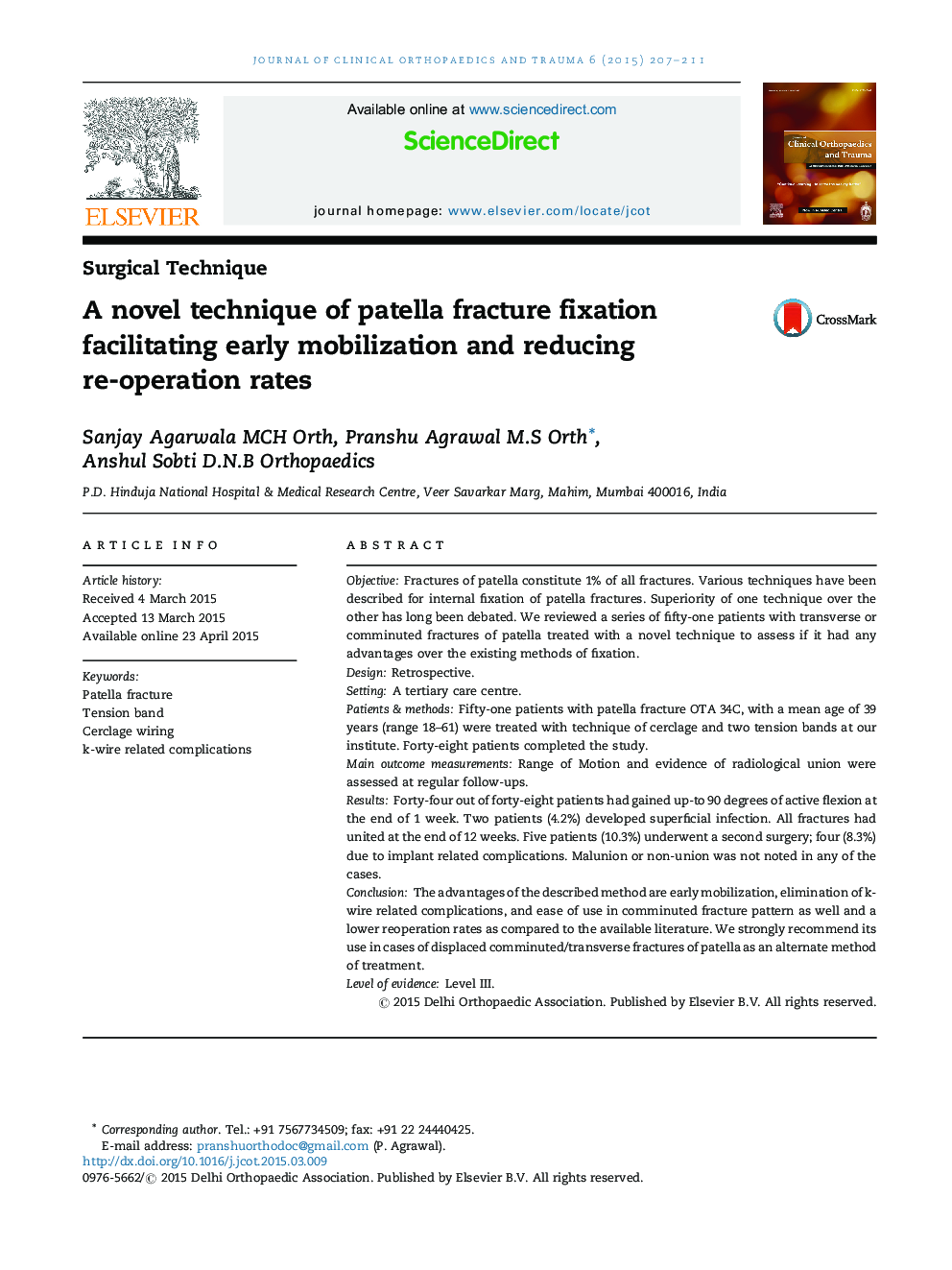| Article ID | Journal | Published Year | Pages | File Type |
|---|---|---|---|---|
| 3245244 | Journal of Clinical Orthopaedics and Trauma | 2015 | 5 Pages |
ObjectiveFractures of patella constitute 1% of all fractures. Various techniques have been described for internal fixation of patella fractures. Superiority of one technique over the other has long been debated. We reviewed a series of fifty-one patients with transverse or comminuted fractures of patella treated with a novel technique to assess if it had any advantages over the existing methods of fixation.DesignRetrospective.SettingA tertiary care centre.Patients & methodsFifty-one patients with patella fracture OTA 34C, with a mean age of 39 years (range 18–61) were treated with technique of cerclage and two tension bands at our institute. Forty-eight patients completed the study.Main outcome measurementsRange of Motion and evidence of radiological union were assessed at regular follow-ups.ResultsForty-four out of forty-eight patients had gained up-to 90 degrees of active flexion at the end of 1 week. Two patients (4.2%) developed superficial infection. All fractures had united at the end of 12 weeks. Five patients (10.3%) underwent a second surgery; four (8.3%) due to implant related complications. Malunion or non-union was not noted in any of the cases.ConclusionThe advantages of the described method are early mobilization, elimination of k-wire related complications, and ease of use in comminuted fracture pattern as well and a lower reoperation rates as compared to the available literature. We strongly recommend its use in cases of displaced comminuted/transverse fractures of patella as an alternate method of treatment.Level of evidenceLevel III.
